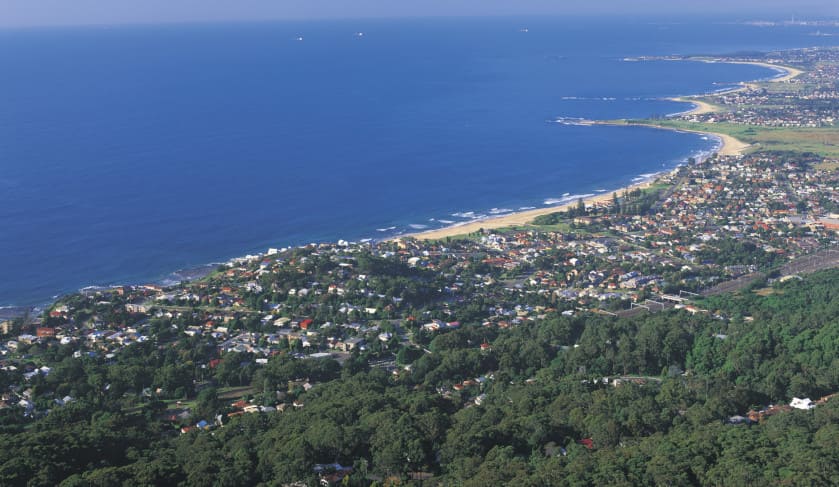Two NSW regions to offer investors solid growth
With plateauing house prices and declining unit values predicted for many of Australia’s capital cities in the coming three years, two regions could emerge as safer and more stable options for investors.

Sydney’s house prices will remain flat in the period between now and June 2019, with unit prices falling 6.8 per cent, according to QBE’s Housing Outlook 2016-19.
In addition, Melbourne, often the poster-child for oversupply and apartment price correction concerns, is facing both house and apartment value declines. The report flags that unit prices could be down 9 per cent by June 2019.
Brisbane too could be in trouble, despite forecast house price growth, with unit values in the city tipped to tumble by 8.2 per cent.
In light of the three cities cooling off, two alternatives in NSW could be set to emerge.
The Newcastle and Wollongong regions, which are “often impacted by the residential cycles taking place in Sydney”, could be more immune to the coming corrections, the report said.
“Newcastle has experienced solid price growth over the five years to June 2016, averaging 6.1 per cent per annum as purchaser sentiment improved and low interest rates supported market entry,” the report said. “Newcastle also offers first home buyers a more affordable option to the rapid price growth seen in the Sydney market. However it is sufficiently distant from Sydney that it does not typically benefit from a commuter population and supportive local fundamentals are required to support demand.”
The report noted that in line with price rises, the region has been experiencing an increase in residential construction activity – but the market remains tight “and conditions are improving”.
Despite declines in coal sector investment, which underpins a significant chunk of the Hunter region’s industry and employment, the QBE report said global demand for thermal coal remains strong and “this should keep production volumes up,” somewhat protecting the region from any employment or economic shocks.
“In addition, Newcastle’s role as a logistics hub [is] anticipated to continue to feed jobs and growth into the local economy while other sectors such as tourism should eventually offset some of the resource sector related declines.”
Newcastle will also benefit from plans to revitalise the region over the next three years, which will see the relocation of the train terminal and development of the light rail line “encouraging job creation and further investment in the area”.
Overall, the outlook is encouraging, the report said.
“The medium-term outlook for the Hunter region economy remains positive. With these urban renewal projects and with Newcastle’s median house price just 48 per cent of Sydney’s at June 2016, the expected increased movement of Sydney’s residents to Newcastle will add demand to the local residential market through to 2019. Median house prices are forecast to continue rising by a cumulative 12 per cent by June 2019, or around 4 per cent per annum, to a median price of $550,000.”
Wollongong has experienced sharper rises in median house prices than the Newcastle region in recent times, with the report noting prices accelerated 9.2 per cent in 2013/14, before climbing to 18.4 per cent in 2014/15 and 13 per cent in 2015/16.
Wollongong’s drawcards are numerous, the report said.
“As with other nearby regional centres in NSW, price growth has been driven by relative affordability of the Illawarra region compared to house prices in Sydney as well as wider buoyant economic conditions.
“Wollongong has also benefited from its proximity to Sydney with around 20 per cent of the Wollongong region’s working population commuting to Sydney for employment at the 2011 Census.”
Softening conditions in Sydney will have some impacts on the region, but it will be a mixed bag.
“The expectation for slower price growth in Sydney means it becomes more difficult for apartment owners in Sydney to upgrade to a Wollongong house, while a weaker market for their existing dwelling is likely to discourage downsizers,” the report explained.
“Consequently, median house price growth is forecast slow to rise by an aggregate 8 per cent in the three years to June 2019, or just under 3 per cent per annum. This will take the median house price to $710,000.
“Wollongong has a relatively diversified economy with tourism and education sectors contributing to economic growth significantly. Much like Newcastle, median house price growth is driven by better affordability relative to Sydney with prices in Wollongong estimated to be 63 per cent of Sydney’s median house price at June 2016, making Wollongong an increasingly attractive option for Sydney residents opting to relocate. However, slowing price growth in Sydney is likely to also reduce the impetus for price growth in Wollongong.”